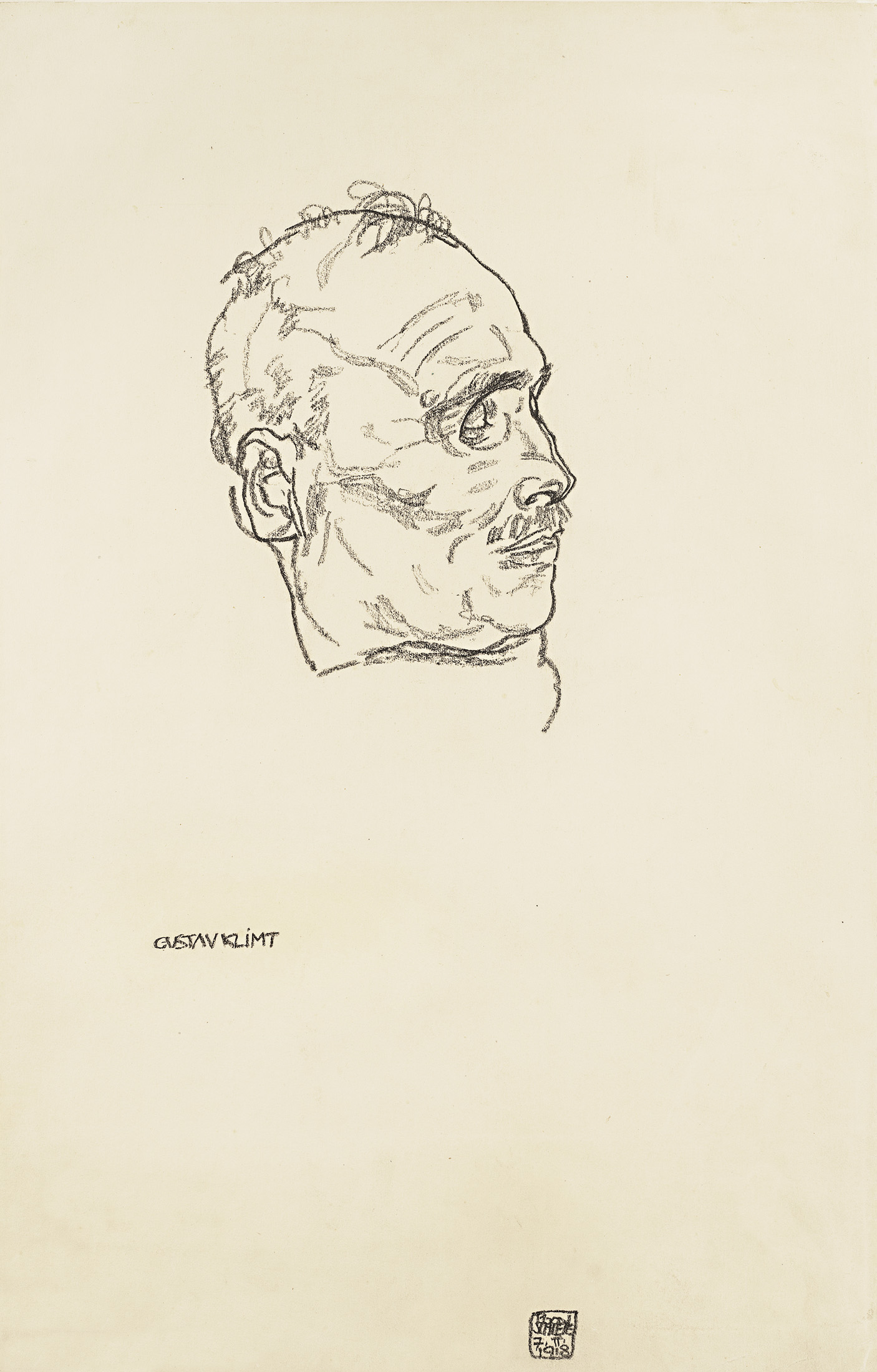1912-1918: Klimt's Last Studio
(1912-1918)The location was only minutes away from the “Red Hill,” which was still undeveloped at the time, as well as Schönbrunn Palace, the Zoo, and the famous entertainment venue “Tivoli.” From his apartment in the 7th district of Vienna, Westbahnstraße 36, Klimt either used the city’s railway network or walked on foot to his studio in Unter St. Veit. During these trips, he liked to take extended breaks at the Tivoli for coffee with whipped cream. At the time, the Tivoli was a popular meeting point for artists; while there, Klimt would often write numerous postcards to Emilie Flöge.
The interior and furnishings of the studio were documented by Moritz Nähr, who photographed the premises after Klimt’s death in February of 1918. The house was first entered through a vestibule, which then led into a reception room. The room was equipped with dark silky-oak wood furniture by Josef Hoffmann. The walls were lined with numerous Japanese colour woodcuts and Chinese paintings, and African sculptures were on the floor.
Many of Klimt’s most important works were created in this studio between 1912 and 1918, among them the large-scale painting “Death and Life,” as well as a number of late landscape paintings of Lake Attersee and Lake Garda. Many artist colleagues, among them Egon Schiele, whose own studio was not far from Feldmühlgasse, visited him in this studio. In February of 1918, the 55 year-old Klimt had a stroke and died following a lung infection in the General Hospital. There, Egon Schiele drew his mentor three more times in his deathbed. Schiele also tried to save Klimt’s studio; however, he died soon after him in October of 1918, due to Spanish Influenza, which was raging in Europe at the time. Gustav Klimt was buried in the Hietzinger cemetery. This was Schiele’s obituary for Klimt: “Gustav Klimt / An artist of unimaginable accomplishment / A human being of rare profoundness / His work is holy.”







